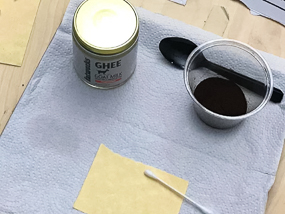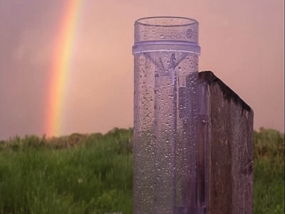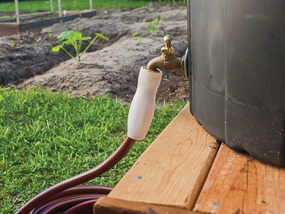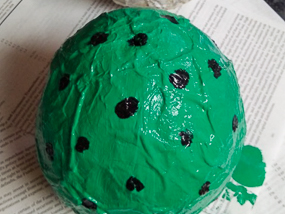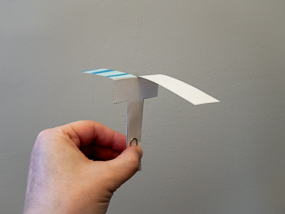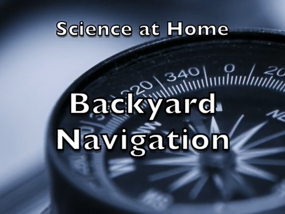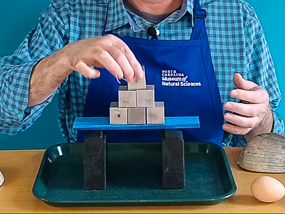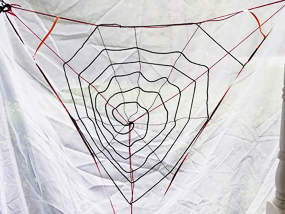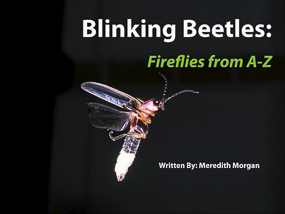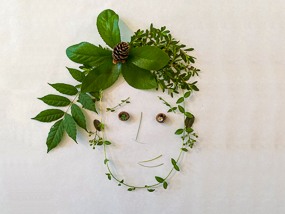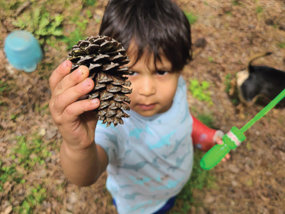DIY Activities: Citizen Science • Conservation • General Science • Nature
Virtual Tours | Augmented Reality | Podcasts
¿No puedes venir al Museo? ¡Utiliza los siguientes materiales y aprende desde casa! Descubre todas nuestras actividades en español en esta página web y obtén lo que necesitas para mantenerte conectado con el Museo y el mundo natural.
Tensión Superficial del Agua | La Ley del Equilibrio del Agua | La Fuerza de la Curva | ¡Desaparición! | El Collar de Hielo | Los Anillos de los Árboles | ¡Cómo hacer comederos para pájaros con piñas!
DIY Activities
Featured Activity: Invisible Ink (PDF)
During the American Revolution, Patriot spies needed a safe way to get vital information to General Washington. They would write messages in invisible ink, let the messages dry and then send the hidden messages to Washington with a courier. Create your own invisible messages in this fun activity, and learn more about the history of invisible ink in the United States!
Citizen Science Adventures
Want to help scientists by collecting and sharing real data? Pick a project below and get started. (Facebook)
Citizen Science: CoCoRaHS (Community Collaborative Rain, Hail, and Snow Network)
Join us on Facebook for this Citizen Science Adventure as we explore precipitation with the Community Rain Hail and Snow (CocoRaHS) Network! This project asks you to set up a rain gauge and report precipitation to scientists. Thousands of scientists then use the data to make more accurate weather predictions, learn more about severe weather patterns and drought and how precipitation impacts the natural world.
The ecoEXPLORE project for North Carolina kids in grade K-8 gets kids outside observing biodiversity and photographing species they see for scientists – and they can earn points toward naturalist prizes and talk to real scientists as they go! Watch the ecoEXPLORE video on Facebook to learn about this fun project especially for North Carolina’s kids, then get ready to make your own observations!
HerpMapper Project: Learn how to participate in this research project where YOU can help scientists learn more about where reptile and amphibian populations occur, how they’re changing over time, and direct conservation efforts to areas and species that need them. The video covers identification resources, how to collect data, and how to share your observations with HerpMapper scientists. If you have a camera of any sort and an internet connection, you can get involved as a HerpMapper citizen scientist! HerpMapper Video
eButterfly Project: Citizen Science Adventures share easy ways that you can contribute to scientific research through videos and live chats with experts. This week we’re looking for butterflies! Join the Museum’s Head of Citizen Science, Chris Goforth, for our latest video and learn about the eButterfly project. The video will cover where to look for butterflies, how to identify the ones you see, how to collect and submit data to eButterfly, and some great resources to help you along the way.
Lost Ladybug Project: What better way to celebrate Earth Week than to participate in a citizen science project that can help protect our native ladybug species? Join us on Facebook for this week’s Citizen Science Adventure as we explore the Lost Ladybug Project! Watch the video to learn how to find, catch, identify, and photograph ladybugs and submit your data to the project. After you know what to do, head outside and look for ladybugs so that you can participate along with us near your own home!
Download the ladybug guide referenced in the video here: https://tinyurl.com/ncladybugguide.
Project Squirrel: Chris Goforth will walk you through why Project Squirrel wants your data, how to tell Fox and Eastern Gray Squirrels apart, and how to collect and enter the data. You might even see some adorable squirrel footage!
Nature’s Notebook project: This project looks at how climate and weather influence the timing of seasonal changes in plants and animals, such as trees getting new leaves or flowers. It’s easy to get started, and our Head of Citizen Science, Chris Goforth, will show you how in this video, now on YouTube.
Citizen Science – Additional Projects
What better time to get outside and learn while you help researchers on their local and national projects?
Conservation
Making a DIY Rain Barrel* (PDF)
You can complete this project with a very small investment, and it will pay itself off quickly from the savings on your water bill. Conserving our natural resources is a great way to be a responsible global citizen. A DIY rain barrel is an essential resource for any backyard gardener.
*This project is recommended for adults, or teens with adult supervision.
DIY Eco-friendly Compostable Seedling Planter
Instead of buying plastic seedling planters or trays, you can make compostable seedling planters with paper, flour, and water. Using a compostable seedling planter eliminates the delicate step of transplanting seedlings into a bigger pot and limits the damage to the delicate root system. Because the planter is already made of plant-based material, it will easily decompose and nutrients will be recycled back into the soil.
DIY Vermicomposting Bin
Did you know that there are over 9,000 species of earthworms identified but only seven species are suitable for vermicomposting? Eisenia fetida, also known as the red wiggler worm, is the most commonly used species in the US. You will need about one pound (which is about 1,000 worms) to start a wormery. These “epigeic worms” usually hang out in the top layer of your compost bin and can devour between 25% and 35% of their own body weight per day.
Growing Vegetables From Table Scraps: Re-grow your own vegetables from table scraps instead of throwing them out!
Crochet a Jellyfish With Plastic Yarn: Learn how to turn plastic bags into plastic yarn or “plarn,” and then use the plarn to crochet, weave or knit anything you can imagine, like a jellyfish!
General Science
Featured Activity: Make a DIY Dinosaur Egg (PDF)
Dinosaur eggs are rarely fossilized, so whenever we find one, it’s a big deal. Today, with the help of a grown-up, you’re going to learn how to make your own dinosaur egg using a balloon, some flour, water and old newspaper.
Coding Bug Game (PDF)
Coding Bug is a “print-your-own” board game that aims to teach players how to think through problems completely and accurately. Computer programs only work when every line of code is well thought-through. This helps to avoid unexpected outcomes or failure. Coding Bug teaches basic coding skills by encouraging the player to think through and plan every move carefully, much in the same way computer programmers do when coding.
Nature’s Helicopters
Plants of all sizes have evolved ingenious ways to disperse their seeds away from the parent plant. Depending on the species of plant, seeds can be spread by gravity, water, animals, wind, or even by structures on the plant itself designed to throw seeds into the air! Humans have learn a lot from studying designs found in nature. Using this pattern, you can build and fly your own paper helicopter inspired by the twirling maple seed!
Sticky Science
There are many intermolecular forces at play when it comes to sticky materials, and water plays a major role in it. Not only can water stick flat surfaces together, but it can also be used to make gooey non-Newtonian fluids and any type of bio-glue. Explore how nature makes bio-adhesives and try some of these activities to learn more about sticky science!
Constellation in a Jar
Do you have a favorite constellation or just like finding shapes in the stars? Here is a way to capture the star patterns in your own home.
Iron in Fortified Foods
Breakfast cereals and other grain products that are fortified have vitamins and minerals like iron, zinc and calcium added during processing. That is a good thing! Did you know, when you crush cereal, it helps to free up the iron particles, so they can be picked up by the magnet?
DIY Whirligig Toy
Did you know? When built to certain specifications, an ancient toy called a whirligig can process blood samples as well as the traditional lab centrifuge. Just another inspiring example of people thinking outside the box and coming up with ways for old technology to do new tricks.
DIY Scrapyard Magnet
Electromagnets are created by arranging conductive wire around a piece of metal that creates a magnet when electricity is applied to the wire. Unlike regular magnets that are always on, electromagnets can be turned on and off simply by controlling the electricity. Learn how to make your own electromagnet in this PDF!
DIY Treasure Map: GIS, which stands for “Geographic Information System,” refers to digital map creation and interpretation. It is a critical technique used by scientists in every field to answer questions about the past, present and future.
In this activity the participant will learn how to make an accurate map of a real location. They will begin by hiding some “treasure” in a safe location inside their house, or in their yard. The location of the treasure will then be drawn out on paper, with the boundaries of the environment and any markers in the environment (trees, rocks, etc.) all to scale with distances from each other accurately represented.
Gravity-defying Water Experiment (YouTube): Water is weird! Unlike many other substances it expands when it freezes and shrinks when it warms again. It heats very slowly and cools down just as slowly. Water is composed of two gases yet, strangely, it’s a liquid at room temperature. Here is another strange behavior to add to the list: it appears water may defy gravity! Is it magic? No, just like its other unusual properties, we will observe that there’s always science behind the mystery.
“Ologies” Crossword Super Difficult! Test your lexicological prowess!
Ology [ ol-uh-jee ] noun, plural: ol·o·gies. Any science or branch of knowledge.
The suffix ology is commonly used in the English language to denote a field of study and is used with words originally adapted from Ancient Greek ending in (-logia).
Backyard Navigation: Getting lost in the wilderness is a frightening thought. Fortunately, today we have GPS and fancy compasses, so wayfinding has become easy and routine. But what happens when these modern navigational tools are not available? Are you simply out of luck? Not to worry, as the answer may be as close as the nearest stick! In this video you will learn how to find the cardinal directions — using the Sun and the shadow cast from a stick — to easily navigate back home. And remember: Never Eat Soggy Waffles! 😉
Making a Compass: A magnet can be used to magnetize a metal object such as a sewing needle. Electrons within the magnet are arranged in the same direction, creating a magnetic field. By rubbing the magnet against the metal needle, the electrons within the needle align and create their own magnetic field. Since our planet is a giant magnet, we can use the magnetized needle to find the Magnetic North Pole of the Earth.
Shapes in Nature: A quick look around the natural world reveals some interesting and repeated shapes. One of the most common shapes you’ll find in nature is the curve. From bird eggs to turtle shells, and even the human skull, curves abound in nature. In this video we will see what other common shapes emerge and how human technology has harnessed nature’s design to build stronger bridges, homes and other structures. How many different shapes can YOU find in nature?
Eggshell Geodes: Create your own crystal wonderland in your favorite small container while you learn how crystalization works.
Principle of Buoyancy Experiment: Ever wonder why you can float in a pool? Or how in the world a cargo ship made of heavy steel, carrying many tons of cargo, doesn’t sink? A Greek scientist named Archimedes who lived over 2,000 years ago had similar questions. One of the many things he is remembered for is the Principle of Buoyancy, which explains how objects behave when immersed in a fluid (for example, you, floating in a swimming pool). Today we are going to learn a simple interpretation of this principle which should make it easy to understand why things sink or float.
DIY Column Chromatography
Recommended for middle and high school students
In this activity, we separate two different colors of ink. This is an example of column chromatography, which uses different chemical characteristics — pH, salinity, size, or in this case, electrical charge (polarity) — to separate the items.
Instruction sheet: https://bit.ly/diychroma
Column chromatography is a technique used to separate different compounds from each other when they are mixed together in a liquid solution. A chromatography column can use pH, salinity, molecular size, or electrical charge to make compounds move through the column at different speeds. Because each compound travels through the column at a different speed, each leaves the column at a different time and can be collected into individual samples or “fractions” for testing.
Red Cabbage pH Indicator: Learn about pH and how to make a simple indicator solution that you can use to determine the pH of any number of things around your house. Red Cabbage pH Indicator: instructions PDF.
DIY: DNA Extraction: DNA. Deoxyribonucleic acid. The genetic code. We hear it mentioned all the time, from the news to crime shows. So, what is involved in extracting an organism’s DNA? And is that something you could ever do? Watch the DNA Extraction video, and you will learn how to extract DNA using some simple kitchen ingredients. Take a few minutes and come do science with us! Strawberry DNA Extraction: instructions
Make an Ice Cube Necklace instructions| Make an Ice Cube Necklace | El Collar de Hielo
See what happens when the freezing point of water is disrupted by the addition of a small amount of salt, and a cotton string is placed along several ice cubes: the result of a lower freezing point, followed by a refreeze, connects them all into an ice necklace.
Eggs-periment #1: Egg Curvature Strength instructions | Curvature Strength Eggs-periment | La Fuerza de la Curva
In this potentially messy science experiment, we learn of the surprising strength of a seemingly fragile egg by placing an enormous amount of heavy books on top of three raw chicken eggs.
Eggs-periment #2: Rubber Egg instructions | Rubber Egg | ¡Desaparición!
In this kitchen experiment we take an ordinary chicken egg and by means of a chemical reaction between calcium carbonate (the shell) and a common household acid (vinegar), dissolve away the chicken eggshell to reveal a strange, rubbery membrane underneath.
Water Density Experiment: instructions | Water Density Experiment | La Ley del Equilibrio del Agua
In this experiment we recognize the differences in density between saltwater and freshwater by adding different food colorings and then balancing the lighter freshwater on top of the denser salt water.
Water Tension Experiment: instructions | Water Tension Experiment | Tensión Superficial del Agua
In this home science experiment using a bowl of water, we discover the properties of water tension by sprinkling pepper on the water’s surface where water tension is greatest, then disrupting this tension by adding a drop of detergent.
Nature
DIY Orb Weaver Spider Web
Most orb weavers build a vertical, flat web between two structures. To stretch the distance between two surfaces, the spider uses wind to drag a silk line from one anchor point to the other in a process called “kiting.” It then secretes different kinds of silk through its spinnerets to create the framework and sticky and non-sticky spirals of the web. Learn how to build your own orb weaver spider web in this DIY activity!
Nature Apps for Kids (Facebook)
We all know kids ask a thousand questions. What is that plant? What is that bird? Why is the sky blue? You probably don’t know all the answers all the time, but there are a couple of apps that can help as you explore nature with your kids.
Seek by iNaturalist: Android | Apple
Merlin Bird ID by Cornell Lab: Android | Apple
Nature Neighborhood
The Nature Neighborhood series offers tips and information to help you explore nature in your backyard through observation and nature journaling. Watch an introductory video, print out an activity sheet, and head outside to explore your nature neighborhood!
Get started with this video demonstrating how to make a nature journal from common household materials. Then check out the Nature Neighborhood website for additional topics and resources!
Download step by step instructions and ideas for your first nature journal.
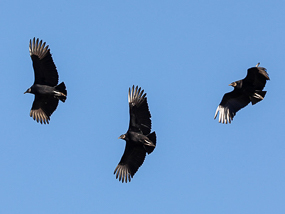
Nature Neighborhood: Vultures!
Head outside in search of soaring or gliding birds (ideally vultures if you can find them, but even pigeons can work!). Once you find birds flying without flapping their wings a lot, spend some time observing them and taking notes. Then turn your observations into a concrete (shape) poem!
Next, watch the “Vulture EdVenture” video to become more familiar with vultures, including their important role in the ecosystem and interesting behaviors. Then take the Vulture Airplane Challenge and design a paper airplane to soar far and long, like a vulture.
Take a Child Outside Activities
Though Take a Child Outside Week isn’t until September, right now is a great time to explore nature with a child. Visit the Take a Child Outside website for a variety of simple activities to share with young children in the outdoors. Here’s a couple of our favorites:
Listen & Feel: Find a comfortable and safe place to sit. Close your eyes for one minute (30 seconds for younger children). Listen to all the sounds you can hear. What are they? From which direction did they come? Who might have made them? Next, close your eyes again; this time focus on the sunlight and air touching your face or arms. Talk about what you can notice about the world through the sense of touch. Where is the sun? From which direction is the breeze blowing? Does the air feel warm and gentle or sharp and brisk?
Sounds of the Night: Every season brings new night sounds — owls in the winter, frogs in the spring, tree crickets in the summer and grasshoppers in the fall. Find a quiet outdoor space and visit it at nightfall. Sit on a blanket and listen for a few minutes. How many different sounds did you hear? Compare the sounds with what you hear during the day or during your last visit. If you have a recording device, record the sounds. To listen to and learn more about frog and toad calls, visit http://herpsofnc.org/frogs-and-toads/.
Whiteville Storytime (Facebook)
Join us on a nature journey with our Storytime videos on the Whiteville Facebook page. After each story, keep learning with an exploration activity guided by Museum education specialists.
Cattails: Versatile Vegetation: Cattails are recognizable plants seen growing in wetlands across North Carolina. Learn about this fascinating plant and discover its value to wildlife and people of the past, present and future. Make a cattail doll similar to those made by indigenous people of the Eastern Woodlands.
Birding by Ear: Nature’s music is all around us. This week’s exploration introduces us to the leaders of the band — birds! Discover the calls and songs of common birds found in our state during the summer months. Listen for their individual rhythms and fly high on their melodious songs. Let your love of birds take flight with this activity and recommended reading.
A Dragonfly Diary: Dive into the underwater nursery of a dragonfly to find out how these prominent insects grow up mostly unseen. “A Dragonfly Diary” celebrates these sometimes overlooked and feared insects, provoking us to reflect beyond the pond. Have YOU seen any dragonflies?
Adventures Across North Carolina: State Symbols: What is the North Carolina State Bird? Did you know North Carolina has a State Reptile and a State Butterfly? Learn about these and many more in this week’s story! After the story, go on a State Symbol Scavenger Hunt, and share with us what you find. Scavenger Hunt: State Symbols
You can even record those observations in iNaturalist to participate in the Museum’s Citizen Science project, Natural North Carolina! Learn all about how to participate in Natural North Carolina here!
Blinking Beetles: Fireflies From A to Z: Get in the summer spirit with one of our favorite symbols of the season: fireflies. Learn all about these flashy figures and how to “speak” firefly in this week’s Storytime. After the story, practice your firefly communication in your own home!
Hummingbirds: Mighty Mini Migrants: Flitting, flapping, feathered and flashy, hummingbirds have arrived in North Carolina! Learn all about these feisty fliers and the amazing journey that they make every year. Watch the video, then learn how to attract and feed hummingbirds and discover how to observe them near your home, and make a fun hummingbird craft! Hummingbird craft: Make a Thaumatrope
Fuzzy, Buzzy, Bumble Bees: In this video, learn all about our important pollinator friends with Museum educator Meredith Morgan. After the story, set off on your own Pollinator Prowl to find pollinators in action around your home!
Am I a Skunk?
Join us on a quest to answer one animal’s very important question. What creatures might our critter meet along its journey through some of the special habitats of southeastern NC? Find out in our story! After the story, set off on your own comparison quest to explore nature and learn about the similarities we humans have with so many different kinds of living things. Comparison Quest PDF
Herp, Herp, Hooray!
Learn all about reptiles and amphibians in North Carolina and how to safely observe them outside your own home by making a cover board.
Do your kids like bugs? Get your “Bug On” this week in this story celebrating our tiny animal neighbors! Learn about fascinating bug behaviors in the video storytime, “Bug On!”, written by NCMNS Whiteville Education Specialist Meredith Morgan. Look for bugs around your own home, and share your photos of them with us on the Whiteville Facebook page!
Other Nature Activities
Nature Memory Match Game
This DIY memory match game can also be used to teach scientific nomenclature, improve language skills, and used in conjunction with field guides or other identification resources. The Nature Memory game can be played with one or two players. Use seasonal items or items found in a specific place such as the beach, forest, desert, etc. Take it on trips or any vacation; it is very portable (12 opaque containers such as cups) with the game pieces being any found objects!
Make a Collage: A nature collage is created with natural objects that are combined to become something new — going beyond the individual objects to form a larger picture. Connect with nature and show off your creativity by creating a collage of yourself, a friend or family member, a pet, or anything you can imagine.
Make a Sundial
Making a human sundial is one way to help your children understand the rotation of the Earth: by tracing their shadows. This is the perfect opportunity to take short, much needed breaks during the day and get some fresh air. The process is as simple as finding a paved, sunny spot, tracing your shadows, and recording your observations in science notebooks several times that day.
Pinecone Bird Feeders: Provide a better opportunity for your children to observe birds in your backyard by creating a bird feeder to attract birds to a close, visible location.
DIY Nature-themed Door Hangers: Trying to study or work at home? Does your family constantly interrupt your online class? Have your kids photobombed your video conference? Here’s a simple DIY door hanger that uses recycled materials and fun, nature-themed messaging that will gently remind people to leave you alone!
A Guide for Camping in Your Backyard: Ready to unplug and get outside for some nature therapy? Check out our tips and suggestions for having a backyard camp out filled with s’mores, stargazing and other no-tech-needed activities.
Tree Rings: This week, Museum educator Bob Alderink walks us through the fascinating details we can learn by studying a tree’s growth rings. Tree Rings | Los Anillos de los Árboles
Virtual Tours
Terror of the South
Coastal NC
Snakes of North Carolina Virtual Tour
The Living Conservatory (butterfly room) Virtual Tour
Peer into the “Changing Room,” where chrysalides emerge as butterflies, then step through the glass doors to enter the Living Conservatory, our replica of a Central American dry tropical forest, filled with living plants and animals. Encounter butterflies, turtles, tarantulas, a snake and even a two-toed sloth!
Nature’s Explorers Virtual Tour
Nature’s Explorers is an exhibit about the history of NCMNS & science in our state. This digital tour also includes the Citizen Science exhibit, which outlines how you can support research while you enjoy nature!
Naturalist Center Virtual Tour
Augmented Reality
Beyond Curie: A Celebration of Women in Science
Beyond Curie is a design project that highlights awesome women in science, technology, engineering + mathematics. Download the Beyond Curie app for an augmented reality view of these wonderful images (on display at the Museum but also cool online).
Podcasts
Love Nature: the Biophilia Podcast
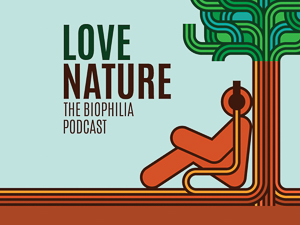
This podcast debuted with iconic biologist Dr. Edward O. Wilson as its first guest, Sept. 15, 2020. The podcast, co-hosted by Museum Director and CEO Dr. Eric Dorfman, along with the Museum’s Chief Veterinarian Dr. Dan Dombrowski, centers around the Biophilia Hypothesis, which suggests that humans possess an innate tendency to seek connections with nature and other forms of life. E.O. Wilson introduced and popularized the hypothesis in his 1984 book, “Biophilia.” For more information or to listen, visit Spotify.
Wild Animals Podcast
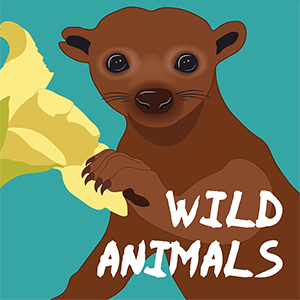
Crazy Stories About Animals, Told by the People Who Study Them
In this podcast biologists share their most amazing stories from working with wildlife around the world, focusing on specific individual animals they have met and followed through their research.


